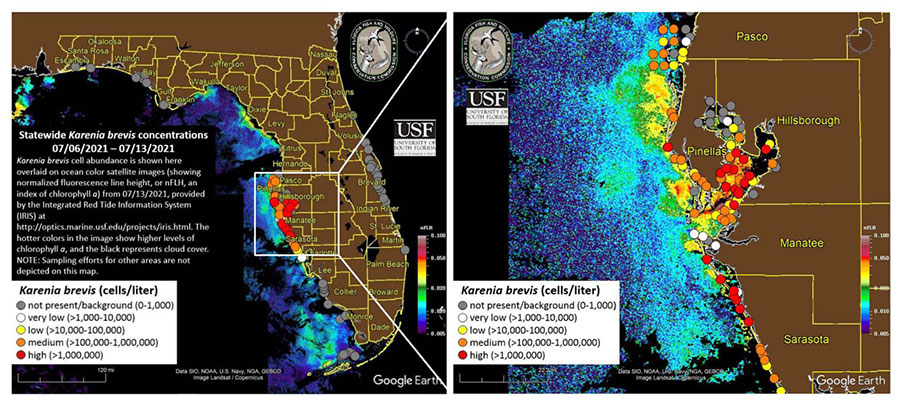If you’re in Tampa Bay, Florida, and you want to spend the day at the beach, you might want to wait for a few months. Right now, the beaches in the area are covered in dead, rotting fish.
“The bay is really hurting right now,” Maya Burke, who lives in Pinellas County, told NPR. “It’s significant numbers of dead fish all up and down the food chain, from small forage fish all the way up to tarpon, manatees, dolphins. … If it’s swimming in the bay, right now it’s washing up dead.”
According to reports, the fish were killed by a severe Florida red tide. The bloom of toxic algae arrives every year in Florida’s Gulf coast, but this year, it’s different. The algae that causes red tides are called Karenia brevis, and they call the Gulf of Mexico home. Generally, however, the Tampa Bay area doesn’t see blooms of this severity in the summer. In fact, the worst of them usually begin occurring around autumn and are gone by January — but the summer blooms have been happening with more frequency in recent years.

Red tide status map from July 14, 2021. Image:
Florida Fish and Wildlife
Conservation Commission
Since the 1990s, there have only been four summertime blooms in the area. One in 1995, another a decade later in 2005 and, most recently, in 2018. “This is not normal,” Richard Stumpf, an oceanographer at the National Oceanic and Atmospheric Administration, explained to NPR. “The fact that it’s been three years since the last one is not good.”
This #RedTide is something serious ? pic.twitter.com/73G5Kt1WZV
— Evan Ligon (@legacysportsmed) July 12, 2021
The first of the dead fish showed up in early June, dying at the site of the algae blooms, gathering in huge, floating groups before washing to shore en masse. As of this reporting, the reason for the red tide’s severity hasn’t been pinpointed, but researchers are theorizing that a catastrophic, 215 million-gallon wastewater spill in April where toxic water was dumped into the estuary from the an old fertilizer plant at Piney Point could be playing a part. Experts also suspect that Tropical Storm Elsa, the earliest fifth-named storm on record in the Atlantic that hit in early July, has something to do with the massive amount of dead fish piling up in the bay.
So far, Floridian officials have cleaned up an astounding 600 tons of dead fish, much of it from the St. Petersburg area. And there’s no end in sight. “We scrape the beaches,” said St. Petersburg’s emergency manager Amber Boulding during a news conference. “We get it cleaned up, but as soon as those tides change, we have fish right back in. We don’t know the end of it.”
The last summertime red tide in the area was in 2018, and it was so bad it killed manatees and dolphins. In humans, a red tide can cause respiratory irritations, and it’s of course a deterrent to tourists looking to enjoy the beaches.

